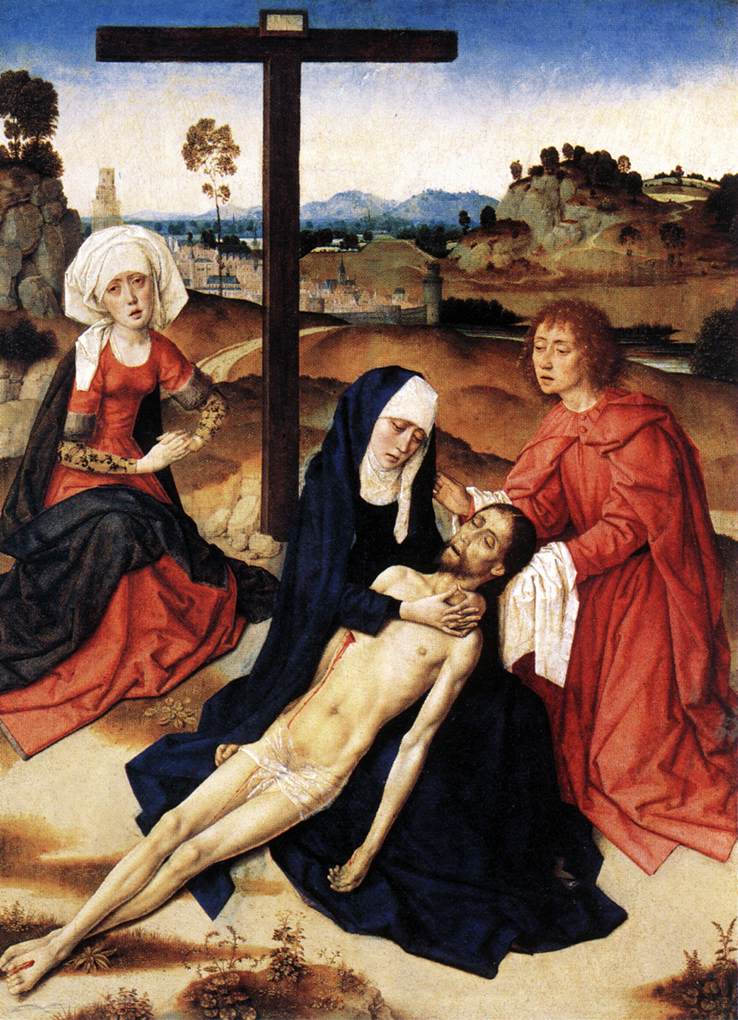Description
The painting The Lamentation of Christ by Dieric The Elder Combates is a masterpiece of Flemish art from the 15th century. This work of art represents the moment when Jesus is taken down from the cross by his disciples and is mourned by his mother Mary and Mary Magdalene.
The artistic style of the painting is typically Flemish, with meticulous attention to detail and great skill in depicting the human figure. The characters in the painting are depicted with great emotional intensity, which makes the artwork even more moving.
The composition of the painting is very interesting, as Combates uses a symmetrical approach to the arrangement of the characters. Jesus is in the center of the painting, surrounded by his disciples and the two Marys. This arrangement creates an effect of balance and harmony in the artwork.
The use of color in the painting is also noteworthy. Combates uses a rich and vibrant color palette, with warm and earthy tones that reflect the sadness and pain of the scene. Blue and green tones are also present, adding a touch of serenity and hope to the artwork.
The history of painting is fascinating. It is believed to have been commissioned by the Leuven archers' guild in the 15th century and used as a devotional piece. The painting was stolen on several occasions over the centuries and was restored on several occasions before being acquired by the Prado Museum in Madrid in the 19th century.
As for the lesser-known aspects of the painting, it is known that Combates used highly advanced techniques for the time, such as the application of transparent layers of paint to create effects of depth and lightness. It is also believed that the painting was influenced by the style of Jan van Eyck, one of the great masters of Flemish art.
In short, Dieric The Elder Combates' The Lamentation of Christ is a fascinating work of art that combines exceptional technical skill with great emotional intensity. Its artistic style, composition, color and history make it one of the most important works of Flemish art of the 15th century.

